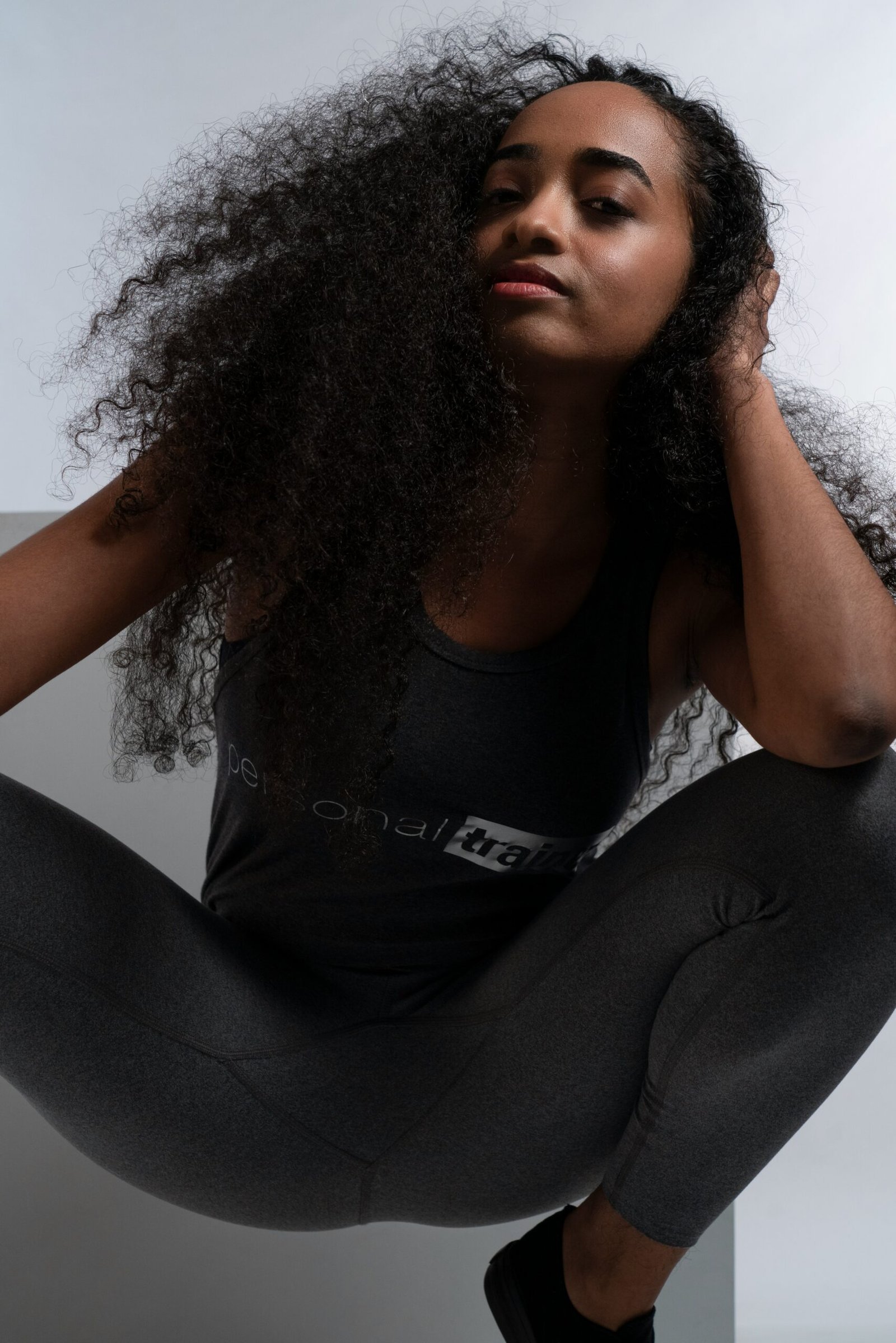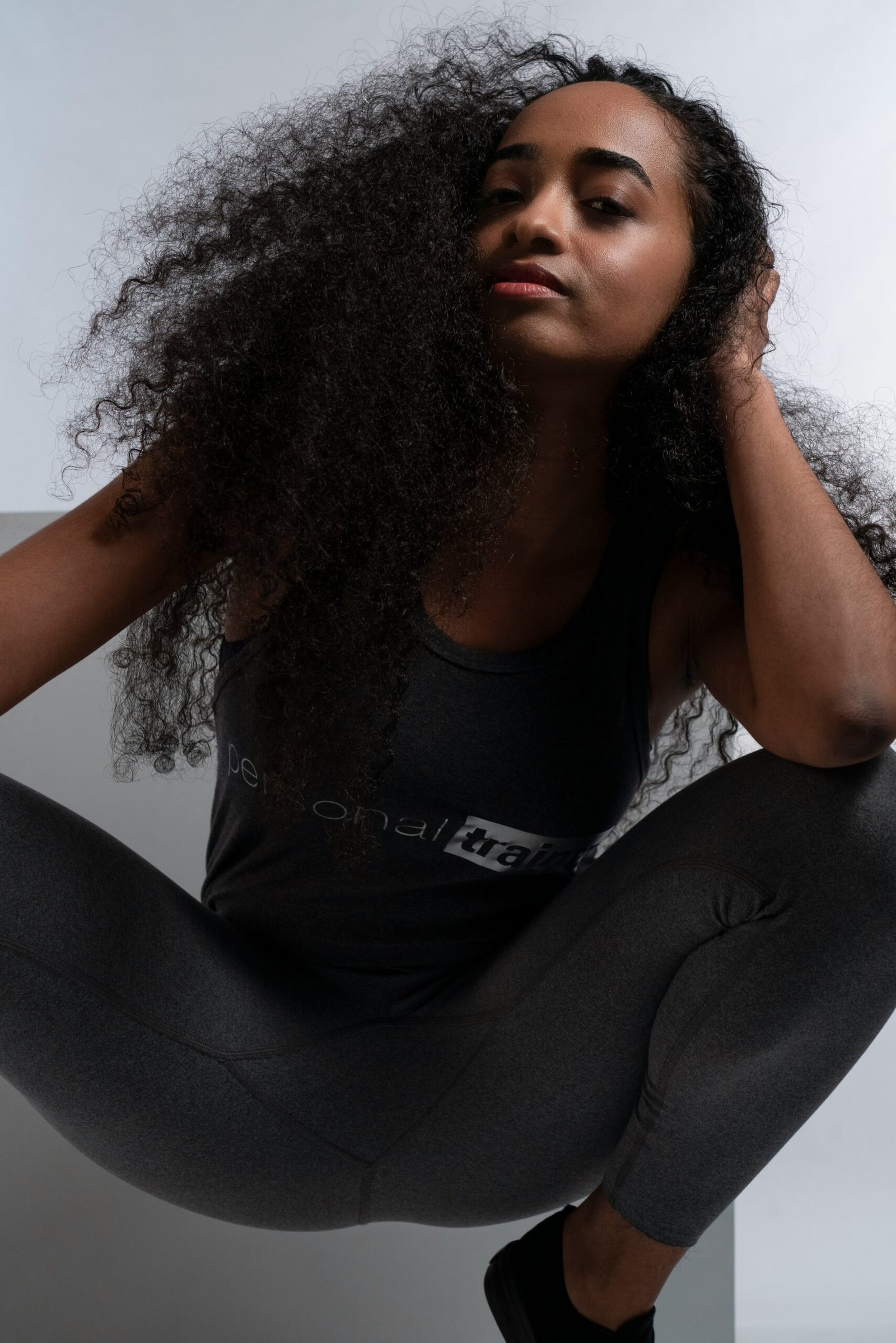
Introduction to Athleisure
Athleisure, a portmanteau combining “athletic” and “leisure,” has emerged as a notable fashion trend, seamlessly blending functionality with style. It represents a shift in the traditional demarcation between sportswear and casual everyday attire, offering a wardrobe that caters to a dynamic and modern lifestyle. The essence of athleisure lies in its practicality, providing comfort intrinsic to athletic wear, paired with the aesthetic appeal typical of streetwear. This combination resonates with a broad spectrum of individuals, transcending age, gender, and cultural boundaries.
The rise of athleisure can be traced to various socio-cultural changes and influential figures that have shaped its trajectory. Celebrities, athletes, and designers alike have championed this fusion, integrating sportswear into mainstream fashion. Notable personalities such as Kanye West with his Yeezy line, and brands like Lululemon, Nike, and Adidas have propelled athleisure into the public consciousness, showcasing its versatility on runways and everyday settings alike.
One of the pivotal moments for athleisure occurred with the increasing acceptance of fitness-focused lifestyles and the shifting norms around workplace attire. With remote working and the emphasis on wellness, traditional dress codes in professional environments have relaxed, favoring more comfortable and adaptable clothing options. Moreover, the cultural focus on health has made fitness activities a central part of daily routines, requiring attire that can transition effortlessly from a yoga class to a lunch meeting.
The growing popularity of athleisure also reflects broader trends in inclusivity and sustainability. Many brands are now creating athleisure lines with sustainable materials and inclusive sizing, catering to a diverse consumer base. This democratization of fashion underscores athleisure’s appeal, positioning it at the intersection of comfort, style, and practicality in contemporary wardrobes.
The Evolution of Athleisure
The concept of athleisure has seen a remarkable evolution, charting a course from functional sportswear to a dominant force in everyday fashion. Historically, athletic apparel was strictly relegated to the gym or sports field, designed specifically for performance and practicality. However, over the decades, we have witnessed a significant shift where comfortable athletic wear has transcended its original purpose to become a staple in wardrobes worldwide.
The transformation of athleisure can be attributed largely to two critical factors: advancements in fabric technology and the changing pace of modern lifestyles. Innovations in textile engineering have led to the development of materials that are both stylish and functional. Fabrics like moisture-wicking polyester, stretchable elastane, and breathable mesh have paved the way for clothing that provides comfort and convenience without sacrificing aesthetic appeal. These advancements have allowed athletic wear to seamlessly merge with casual fashion, making it suitable for a variety of settings beyond the gym.
Concurrent with these technological advancements, there has been a tectonic shift in lifestyle preferences. Modern life, characterized by a blend of work, fitness, and leisure, has created a demand for versatile clothing that can transition smoothly between different activities. The trend towards more flexible and health-conscious living has contributed significantly to the rise of athleisure, as consumers seek apparel that supports an active yet comfortable lifestyle.
Key milestones in the evolution of athleisure include the introduction of yoga pants by brands like Lululemon, which revolutionized the category by combining comfort with style. Major sportswear brands such as Nike and Adidas have also played influential roles by integrating high fashion elements into their designs, resulting in collaborations with renowned designers and celebrities. These partnerships have further blurred the lines between athletic wear and high fashion, solidifying athleisure’s position in the fashion hierarchy.
As the athleisure trend continues to gain momentum, it exemplifies how fashion adapts to and reflects shifts in society. Its journey from the realm of sports to the forefront of everyday style underscores the versatility and enduring appeal of athletic-inspired clothing.
Key Elements of Athleisure
Athleisure represents a seamless blend of comfort, functionality, and style, making it a dominant trend in modern fashion. At its core, the defining elements of athleisure are the materials used and the versatile designs that cater to both performance and everyday wear.
One of the primary features of athleisure is the use of comfortable, functional fabrics. These materials, such as spandex, nylon, and polyester blends, are chosen for their adaptability and performance attributes. They offer stretch and flexibility, ensuring unrestricted movement during physical activities. Additionally, these fabrics provide support and maintain their shape, enhancing their longevity and suitability for all-day wear.
Performance features are another fundamental aspect of athleisure. Moisture-wicking technology, for instance, helps to keep the body dry by drawing sweat away from the skin, which is essential for staying comfortable during workouts or hot weather. Breathable mesh panels and strategically placed ventilation further enhance airflow, preventing overheating and increasing overall comfort.
The design of athleisure garments also emphasizes versatility. These pieces can transition seamlessly from the gym to casual outings. Stylish cuts, modern aesthetics, and thoughtful detailing like hidden pockets, adjustable waistbands, and ergonomic seams contribute to this flexibility. Such design elements not only enhance the visual appeal of the clothes but also offer practicality, making them suitable for various activities throughout the day.
Ultimately, athleisure strikes a perfect balance between form and function. It allows individuals to maintain an active lifestyle without compromising on style. With its focus on high-performance materials, supportive fabrics, and adaptable designs, athleisure clothing enables wearers to move effortlessly between different spheres of their lives, embodying a modern, active, and stylish ethos.
Styling Tips for Athleisure
Incorporating athleisure into your everyday wardrobe can elevate your style effortlessly. One of the key principles is blending athletic pieces with lifestyle items to create a balanced, fashionable look. Start with foundational pieces such as high-quality leggings or a chic sports bra. These items can be seamlessly integrated with more traditional wardrobe staples like blazers or oversized shirts, imparting a sophisticated edge to your outfit.
A classic combination involves pairing a sleek pair of leggings with a tailored blazer. Opt for neutral-colored leggings, like black or navy, which can serve as a versatile base. Complement this with a stylish blazer in a contrasting shade or a bold color to create a striking visual appeal. Blazers not only add structure to the outfit but also work to make the ensemble suitable for a range of occasions, from casual outings to semi-formal gatherings.
Layering is another effective technique to master when styling athleisure. For instance, start with a fitted sports bra or tank top, then layer it with an oversized denim jacket or a cozy cardigan. This layering strategy not only enhances the outfit’s aesthetic appeal but also provides practicality for varying weather conditions. Elevate the look further by incorporating joggers or athletic pants that match or complement the color scheme of your layers.
Color coordination is critical to achieving a polished athleisure look. Stick to a cohesive color palette, mixing and matching shades that work well together. Monochrome looks are particularly elegant, allowing you to play with different textures and fabrics within the same color family. Alternatively, color blocking can add vibrant energy to your outfit, but exercise caution to avoid overwhelming combinations.
Accessories play a pivotal role in refining your athleisure style. Incorporate simple, yet stylish accessories such as a sleek watch, minimalistic jewelry, or a fashionable backpack. Footwear choices, such as trendy sneakers, can anchor your outfit and provide the comfort and practicality synonymous with athleisure.
Ultimately, choose pieces that align with the occasion. More casual settings might allow for sports bras and mesh tops, whereas a day at the office might call for strategically layering with blazers and dressier shoes. By following these tips, you can master the art of infusing athleisure into your everyday wardrobe, achieving a perfect blend of comfort and style.
Athleisure and Sustainability
The allure of athleisure extends beyond its comfort and style; it increasingly encompasses a commitment to sustainability. As consumers become more environmentally conscious, the demand for eco-friendly apparel has surged, prompting athleisure brands to adopt sustainable practices as a core element of their production processes. Several trailblazing companies are at the forefront of this green revolution, demonstrating that high-performance activewear can be both stylish and sustainable.
Brands like Patagonia and Adidas have set benchmarks in sustainable athleisure by integrating recycled materials into their collections. Patagonia, for instance, utilizes recycled polyester and organic cotton to minimize environmental impact. Another example is Adidas’ collaboration with Parley for the Oceans, transforming plastic waste into high-performance sportswear. These initiatives not only reduce waste but also encourage the industry’s move towards a circular economy.
Moreover, sustainable practices in athleisure are not limited to material sourcing. Companies like Nike and Girlfriend Collective have invested in environmentally-conscious manufacturing techniques. Nike’s Move to Zero initiative focuses on carbon-neutral production by maximizing energy efficiency and reducing waste. Meanwhile, Girlfriend Collective incorporates ethical labor practices and transparency, ensuring that every garment’s lifecycle is environmentally sound.
Consumers play a pivotal role in driving sustainability in the athleisure market. When purchasing athleisure wear, options like buying from brands committed to sustainable practices or choosing items made from recycled and organic materials are essential. Additionally, extending the life of garments through proper care and opting for quality over quantity can significantly diminish an individual’s ecological footprint. By making informed choices, consumers can support responsible production and foster a culture of sustainability within the athleisure industry.
Sustainability in athleisure is more than a trend; it represents a shift towards responsible consumer habits and environmentally friendly innovations. By prioritizing sustainable practices, both brands and consumers contribute to a greener future while enjoying the multitude of benefits that athleisure brings to everyday style.
Influence of Athleisure on Traditional Fashion
Athleisure has significantly redefined the landscape of traditional fashion, blurring the boundaries between activewear and casual wear. Its meteoric rise can be attributed to shifting consumer preferences towards comfort and functionality, coupled with a growing acceptance of health and wellness as integral aspects of contemporary lifestyle. This evolution has prompted designers and brands to strategically adapt their collections, integrating athletic elements to cater to the demand for versatile fashion.
In recent years, numerous high-profile designers have embraced the athleisure trend, incorporating sporty aesthetics into their conventional designs. This innovative approach has resulted in the emergence of hybrid garments that seamlessly transition from gym to street, embodying a blend of both style and performance. For instance, the luxury fashion house Chanel showcased an athleisure-inspired collection during its Spring/Summer runway show, featuring sleek tracksuits, high-fashion sneakers, and tailored sport coats. Such collaborations highlight the industry’s commitment to evolving with consumer needs while maintaining a sense of exclusivity and sophistication.
Similarly, renowned brands like Nike and Adidas have joined forces with top designers to create exclusive athleisure collections. The Nike x Sacai collaboration exemplifies this fusion, where the Japanese fashion label injects its avant-garde sensibilities into Nike’s technical garments, resulting in a range that is both fashion-forward and functional. These partnerships not only amplify the appeal of athleisure but also illustrate how traditional fashion continues to be influenced by athletic elements.
Moreover, mainstream retailers have also capitalized on the athleisure movement by offering collections that prioritize comfort without sacrificing style. Brands such as Lululemon and Athleta have expanded their offerings to include tailored pieces that can be effortlessly incorporated into everyday wardrobes. This shift underlines the impact of athleisure on traditional fashion, as more consumers seek clothing that supports an active lifestyle while retaining a polished appearance.
Ultimately, the proliferation of athleisure has heralded a new era in fashion, one that champions comfort, functionality, and style in equal measure. As this trend continues to evolve, it reaffirms the notion that the modern wardrobe can be both versatile and effortlessly chic, redefining the parameters of traditional fashion.
Athleisure in the Workplace
The rise of athleisure has gradually transitioned from casual outings to professional settings, marking a significant shift in workplace fashion norms. This growing acceptance of athleisure in the workplace demonstrates how contemporary attire blends both style and comfort, catering to a more dynamic and practical approach to office wear. By carefully selecting and styling certain athleisure pieces, employees can maintain a polished, professional appearance without sacrificing comfort.
One of the key elements in successfully integrating athleisure into workplace attire is choosing multifunctional pieces that offer a balance between formal and relaxed. Blazers made from stretchable, breathable fabrics paired with tailored joggers can create a sophisticated yet comfortable look. Opt for neutral tones such as black, grey, or navy, which exude professionalism and can be easily accessorized. Monochromatic outfits can also make athleisure items appear more cohesive and office-appropriate.
Another effective combination involves pairing sleek, well-fitted yoga pants with a structured, crisp blouse. Adding a chic pair of loafers or ankle boots can further enhance this ensemble’s office-readiness. Additionally, incorporating modern, minimalistic sneakers with a smart business-casual dress extends the utility of athleisure without compromising on elegance.
Adhering to workplace dress codes while incorporating athleisure elements requires careful consideration. It’s crucial to maintain a neat, put-together appearance by avoiding overly casual items, such as graphic tees and oversized hoodies. Instead, opt for athleisure pieces with clean lines and high-quality materials. Layering can also play a vital role; for instance, a polished trench coat or a knit sweater can add a formal touch to an otherwise casual outfit. Investing in versatile pieces that can transition from professional settings to casual outings can maximize their functionality and appeal.
Ultimately, the successful inclusion of athleisure into a professional wardrobe hinges on strategic choices and a meticulous balance of comfort and formality. This approach ensures that employees not only feel comfortable in their attire but also project an image of competence and professionalism.
Future of Athleisure
The athleisure trend has seen a meteoric rise, driven by a collective shift toward comfort and functionality in fashion. Looking ahead, the future of athleisure is poised to be even more dynamic, propelled by innovations in fabric technology and evolving consumer preferences. One of the most anticipated advancements lies in smart fabrics, which are not only lightweight and breathable but also integrate technology to enhance physical performance. Features such as moisture-wicking, temperature regulation, and even biometric tracking could become mainstream, elevating both the functional and stylish aspects of athleisure wear.
Design innovations will also play a crucial role in the future of athleisure. As consumers continue to seek versatile garments that transition seamlessly from a morning workout to a casual office setting, brands are likely to explore hybrid designs. The focus will be on creating pieces that offer the right balance between athletic functionality and aesthetic appeal. Expect to see more garments featuring intricate weaving techniques, 3D printing for customized fits, and modular designs that allow for adaptable styling according to one’s needs.
Consumer preferences will undeniably influence the trajectory of athleisure. The growing demand for sustainable and ethical fashion is likely to lead brands to adopt eco-friendly materials and manufacturing processes. Innovations in biodegradable fabrics and recyclable garment designs could push the boundaries of athleisure, making it not just a trend, but a sustainable lifestyle choice. Additionally, the inclusive design will be another driving force, ensuring that athleisure caters to a wider demographic by offering a range of sizes and styles suitable for various body types and cultural backgrounds.
However, the athleisure market is not without its challenges. As the trend becomes more saturated, differentiation will be key. Brands must continually innovate to stand out in a crowded space while maintaining quality and functional integrity. Moreover, economic fluctuations and shifting global dynamics could impact manufacturing and cost structures, compelling brands to adapt swiftly. Nonetheless, with a continued focus on innovation, sustainability, and inclusivity, the future of athleisure looks promising, poised to redefine the boundaries of everyday style.


